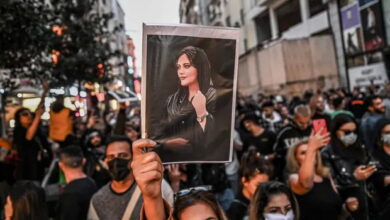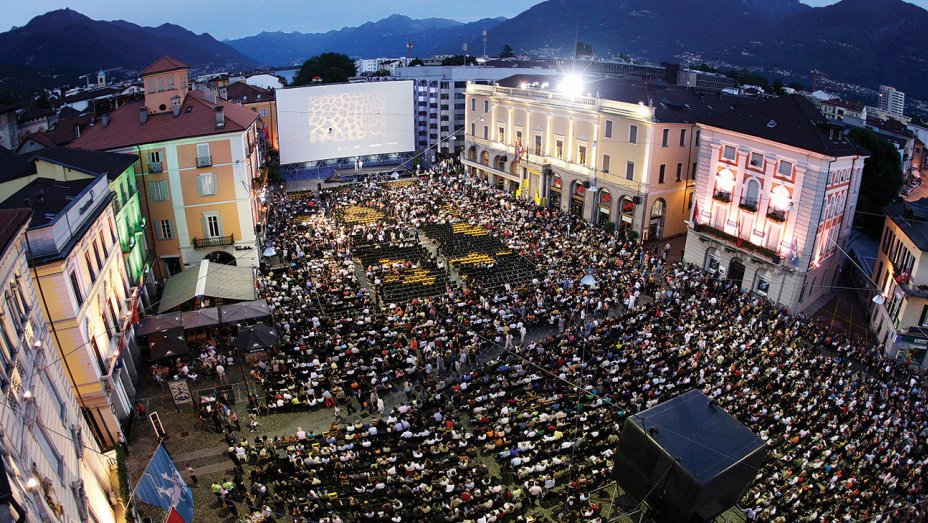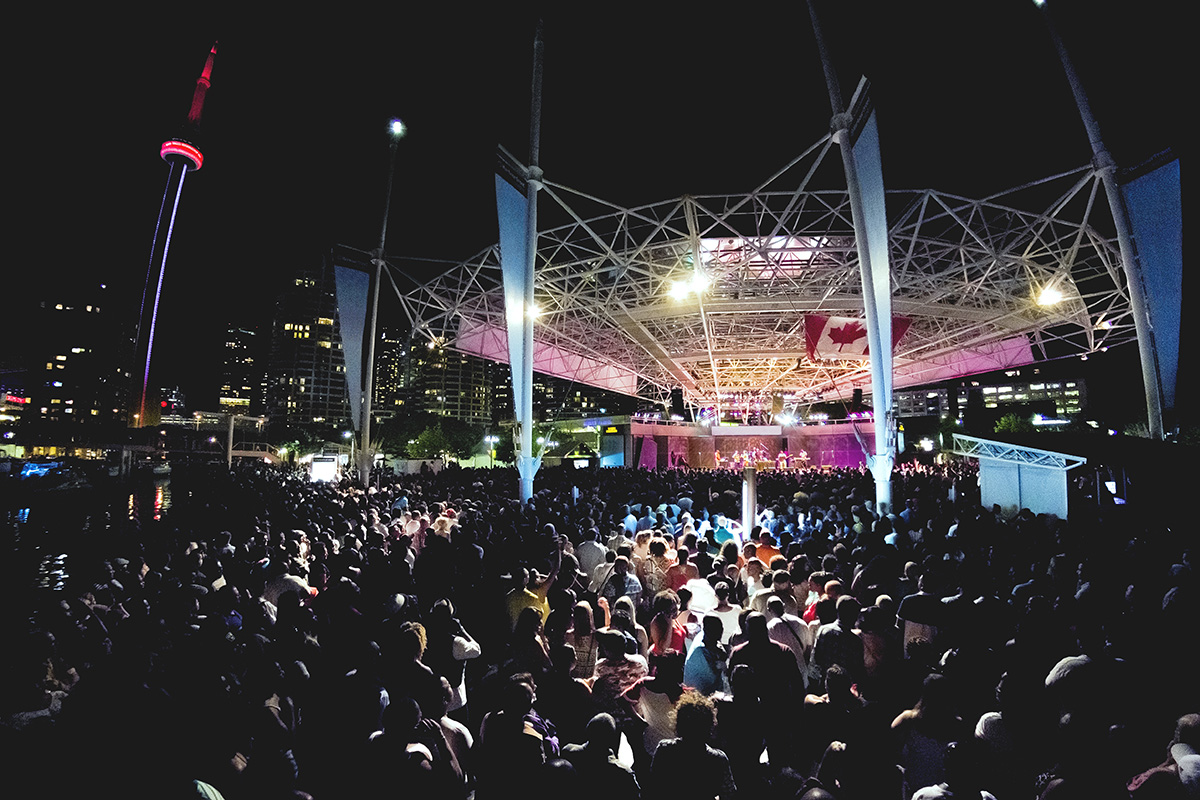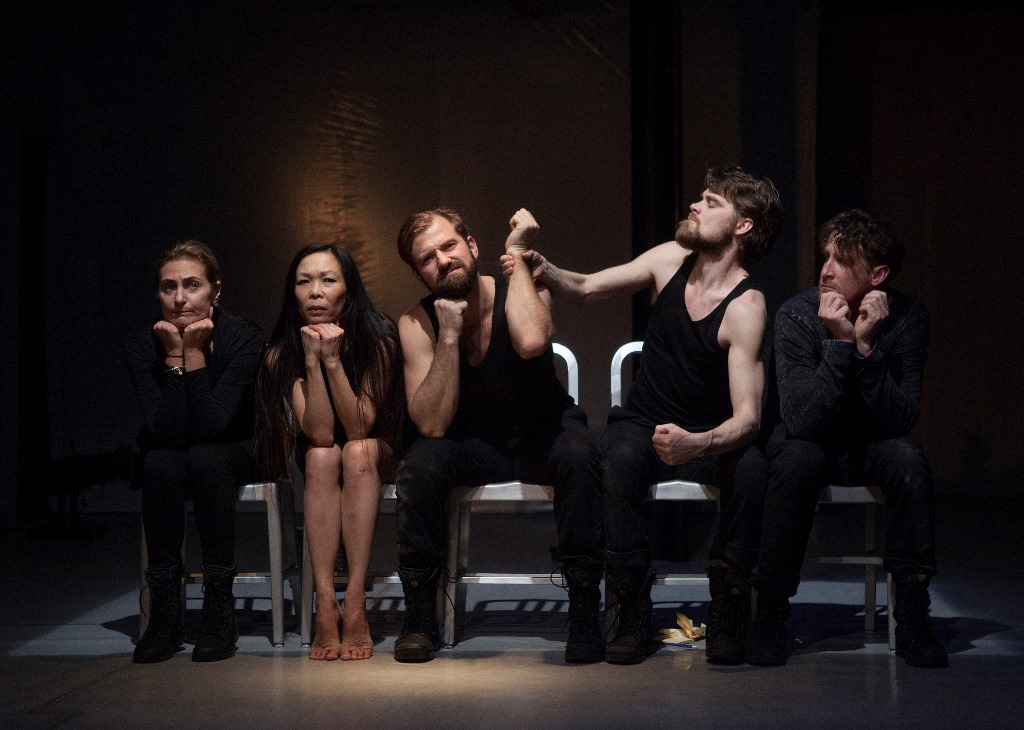
هنر به انقلاب منتهی نمی شود
گفتگو با سهیل پارسا درباره نمایش Forgiveness
هلیا قاضی میرسعید
تورنتو – مارچ ۲۰۱۴
مثل همیشه دیر رسیدم، تا روی صندلی نشستم، نمایش شروع شد. Forgiveness (بخشش) را می گویم، آخرین کار سهیل پارسا. نمایشی که از همان ابتدا و با همان چند جمله اولیه، کنجکاوی ام را قلقلک داد. نمایش که به پایان رسید، فکر کردم خوب است قراری با او بگذارم و بنشینم پای حرف هایش. برای اولین بار بود که کارش را می دیدم، هرچند اسمش را پیشترها شنیده بودم، اما از قدیم گفته اند شنیدن کی بود مانند دیدن. این بود که پیشنهاد مصاحبه دادم. قبول کرد. آمد. درست سر وقت. قهوه ای به حجم یک کاسه برایش آوردم. گرم صحبت شدیم. پر بودم از سوال. او هم گفت و گفت. گه گاهی فنجان خالی قهوه را سر می کشید تا نفسی تازه کند، اما سوالات من پایانی نداشت. خب چه می شود کرد وقتی در فرهنگی رشد کردی که «کینه شتری» کاربرد روزانه دارد، اگر این وسط یک نفر پیدا شود و حرفی از بخشش بزند، به مذاقت خوش می آید. موضوعی که شاید تو هم در مقام انسان، گاهی در خلوت به آن فکر کرده باشی.
ذهن است دیگر، هر فکری به آن خطور می کند. خاصه در روزگاری که سرت را به هر طرف می چرخانی، جنگی و ستیزی، قتلی و غارتی، کشت و کشتاری در جریان است. راه دور هم نمی خواهد بروی، کشورهای همسایه ایران را می گویم هر کدام را نام ببری، خبری از آرامش نمی شنوی. در این وانفسا حرف از صلح و بخشش که می شود، بد جور به دلت می نشیند. مخصوصا اگر راوی سهیل پارسا باشد با آن وسواس و نکته سنجی که در لحظه لحظه کارش موج می زند.

شما کارنامه بلند و بالایی دارید که در آن هفت نمایش ایرانی هم, ترجمه و اجرا کردید. در برخی آثار شما نوعی وابستگی به ایران و یا بهتر بگوییم نوعی وابستگی به ریشه های شرقی دیده می شود، در عین حال که اثر بین المللی و جهان شمول است. این تطبیق چگونه اتفاق می افتد که مخاطب غیر ایرانی هم با اثر شما ارتباط برقرار می کند؟
به نظر من انسان حد و مرز نمی شناسد. وقتی جوهر انسان، جدا از مذهب، رنگ و نژاد قرار می گیرد، و وقتی بعد انسانی اثر تقویت می شود، آن موقع است که مخاطب انگلیسی زبان، دیگر فکر نمی کند که با یک کار بیگانه و یک فرهنگ خارجی مواجه شده است، در نتیجه با نمایش ارتباط برقرار می کند. کاری که من با ۷ نمایش ایرانی انجام دادم همین بوده است و این اتفاق شکل ناخودآگاه پیدا کرده است و این طور نبوده که من هر وقت می خواهم نمایشی را شروع کنم، به این فکر کنم که چطور می توان آن را جهانی کرد. به همین دلیل هر گاه مواد و متریالی به دستم می رسد، در ابتدا ابعاد و اشکال انسانی آن را کشف می کنم و همیشه در کارهایم به دنبال این بوده و هستم که آن دسته از ابعاد انسانی را که هر کسی می تواند با آن ارتباط برقرار کند، تقویت کنم.
چون نمی خواهم نمایشی کار کنم که خاص فرهنگ خودم باشد. برخی کارگردانان، نمایشی روی صحنه می برند که ممکن است گروهی آن را نفهمند و پاسخ آنها به مخاطب این است که این مشکل شماست که نفهمیدید. به نظر من وقتی شما تصمیم می گیرید که اثری را روی صحنه ببرید که به زبان انگلیسی باشد، موظف هستید آن را برای تماشاچی انگلیسی زبان، قابل فهم و دسترسی کنید. من هیچ وقت شعور مخاطب را دست کم نمی گیرم و این فلسفه کاری من است. همچنین معتقدم اگر ما نمایشنامه های شکسپیر، بکت و… را ترجمه می کنیم و روی صحنه می بریم، چرا نمایشنامه های ایرانی را به انگلیسی ترجمه نکنیم و آن را در دسترس مخاطب غربی قرار ندهیم؟ نمایشنامه نویسان ما مانند بهرام بیضایی، نعلبندیان و جوانترهایی چون محمد رحمانیان، حمید امجد، محمد چرمشیر و… دست کمی از نمایشنامه نویسان مطرح جهان ندارند. فکر می کنم ما خودمان را دست کم گرفته ایم اگر بگوییم کار ایرانی قابل فهم نیست. در حالیکه مثلا بهرام بیضایی آنقدر زیبا می نویسد و آنقدر ساختار نمایشنامه هایش محکم و هنرمندانه است که برای مخاطبان و فرهنگ های مختلف قابل فهم است.
به نظر می آید انسانیت و اخلاقیات نقطه مشترک آثار شماست. آرش، حلاج و این کار آخر همگی به دنبال انسانیت و اصالت هایی هستند که در روزمرگی زندگی انسان امروز کمرنگ شده و یا از دست رفته اند. در واقع، شما به دنبال این هستید تا به انسان امروز تلنگری بزنید و به او یادآوری کنید که از معنویات فاصله گرفته و درگیر مادیات شده و این مادی گرایی او را از انسانیت دور کرده است. اینطور نیست؟
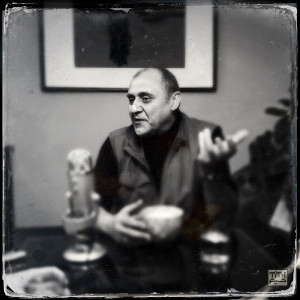
بله، یکی از ابعاد مهم کار من همین است. البته وقتی از اخلاقیات حرف میزنیم، بعد مذهبی پیدا می کند بنابراین من ترجیح می دهم بگویم ارزش انسانی. برای من حرمت و مقام انسان بسیار مهم است. آنچه من از آن بی نهایت بیزارم، کشتار و حذف انسانها تنها با نام ایدئولوژی، سیاست، دین و… است. در طول تاریخ بشریت و مشخصا در قرن بیستم این کشتار شوک آور است. در این قرن ما شاهد قربانی شدن ۴۰۰ میلیون نفر هستیم. بنایراین همیشه این سوال در ذهن من بود که چرا انسان ها همدیگر را می کشند؟ و اینکه ما به کجا رسیدیم که برخی فکر می کنند که همیشه چیز را می دانند و کسانی که این دانش و آگاهی را ندارند باید حذف شوند. این مسئله فقط به حوزه مذهب ختم نمی شود و چنین رفتاری در عرصه سیاست هم دیده می شود. تفکر مارکسیسم-لنینیسم هم که به ظاهر هدف بسیار واضح و روشنی داشت و آن رهایی بشریت بود. اما در نهایت می بینیم که همین نگرش ها جز ننگ، نفرت و خونریزی، برای بشریت ارمغانی نداشته اند.
از بعد دیگری اگر بخواهم به این پرسش پاسخ بدهم، تئاتر همیشه برای من یک عمل اعتراضی بوده است. مسائلی چون دروغ، تزویر، فرصت طلبی و… موضوعاتی هستند که ذهن من را همیشه به خود مشغول می کنند به همین دلیل کار من معمولا محتوای اعتراضی دارد. البته من برای کسی نسخه نمی پیچم. در نمایش Forgiveness (بخشش) هم من به مخاطب نمی گویم که راه نجات بشریت چیست. چون معتقدم زمانی که راه نجات را به افراد پیشنهاد بدهید، خود را در جایگاه رهبر مذهبی و سیاسی قرار داده اید. در حالیکه هنرمند، رهبر سیاسی و مذهبی نیست و فقط ناملایمات و کژی ها را مطرح می کند و نتیجه گیری را به عهده مخاطبانش می گذارد که پس از دیدن بدی ها، چه راهی را انتخاب می کنند. من به مخاطبم پیام نمی دهم.
اما در خیلی موارد یک اثر هنری، یک شعر یا جمله در برهه ای از زمان تبدیل به یک آرمان و یا شعاری برای بیان یک خواسته و یا اعتراض شده است و این مسئله خیلی نامتعارف نیست. این بدان معنا نیست که هنرمند عقیده شخصی خود را به مخاطبش تحمیل کند. اما می تواند نقش راهنما را بازی کند. این طور فکر نمی کنید؟
معتقدم هنر هیچ وقت نمی تواند تغییر جدی و آنی در جامعه پدید بیاورد. هنر به انقلاب منتهی نمی شود، اما می تواند در مراحل رسیدن به انقلاب نقش بازی کند. به نظرمن کار هنر این نیست و قرار هم نیست چنین عملکردی داشته باشد. یادم نمی آید چه کسی این جمله را گفته که:«هنر تغییر اجتماعی به وجود نمی آورد، اما می تواند انسانها را تک تک تغییر دهد.» و این بهترین و مهمترین کاری است که هنر می تواند انجام دهد. یک فیلم خوب دنیا را تغییر نمی دهد اما می تواند در ۵۰ نفر تغییر ایجاد کند.
برای خود من پیش آمده که وقتی فیلمی، نمایشی می بینم و یا یک آهنگی گوش می کنم، یک جمله از آن تا مدتها ذهنم را درگیر می کند و من را به فکر وامی دارد چراکه ممکن است ایده اولیه آن در ذهن من هم شکل گرفته باشد، اما شیوه بیان و ابراز آن را نمی دانستم و شنیدن آن جمله، دیالوگ و یا شعر در من و همفکرانم حرکت ایجاد می کند و حتی ممکن است آن جمله به مثابه یک آرمان و شعار در اعتراضاتمان استفاده کنیم. این به نظر شما آغاز یک جنبش نیست؟
من همچنان معتقدم این تاثیری است که هنر روی شما به عنوان یک فرد گذاشته است. مثلا هیچ یک از اشعار فروغ منجر به انقلاب نشدند، اما اشعار او در تک تک افراد تاثیر گذاشت و در آنها تغییر ایجاد کرد. اگر یک دیالوگ در شما تاثیر می گذارد بدان معنا نیست که این اتفاق در همه مخاطبان افتاده است و همه تحت تاثیر آن جمله قرار گرفته اند.
یعنی منشا تحول اجتماعی نمی تواند باشد و در عمق نمی تواند تاثیر بگذارد؟
برعکس! من فکر می کنم هنر در عمق تاثیر می گذارد. مثلا ما نمی توانیم بگوییم وقتی فروغ شعر «تولدی دیگر» را سرود، منتهی به کودتای 28 مرداد شد. اما ممکن است آن شعر در بسیاری تاثیر گذاشته باشد و آنها از درون شروع به تغییر کرده باشند. به نظر من اگر فروغ نبود، بیضایی، کیارستمی، جعفر پناهی و… نبودند. کارکرد هنر برای من مانند کار قلب یا مغز انسان است که در ظاهر دیده نمی شوند، اما بدون آنها زندگی ممکن نیست. نقش هنر در اجتماع قابل رویت نیست، اما حضورش را نمی توان کتمان کرد. مثلا وقتی شما اشعار مولانا را می خوانید در آن به ارزش های انسانی بسیار توجه شده، مولانا هیچ وقت خود را به قومیت خاصی محدود نمی کند و شما می بینید هنوز پس از قرن ها تاثیراتی که اشعار او بر فرهنگ جامعه ما گذاشته، چشم گیر است. البته بستگی دارد شما در بحث هویت به دنبال چه باشید. اما من معتقدم هویت ما ایرانی ها بدون کسانی مانند فردوسی، مولانا، خیام و… بی معنی است و این همان تاثیر هنر در جامعه است، تاثیری که دیده نمی شود، اما در زندگی مردم جاریست.
گفتید که جنگ و کشتار و… شما را آزار می دهد. آیا همین موارد باعث شد تا به موضوع بخشش – Forgiveness – بپردازید؟
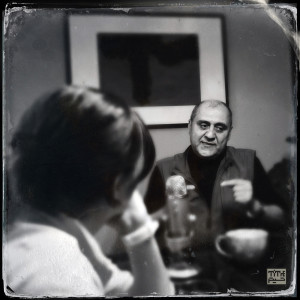
به عنوان یک انسانی که دوست دارم دنیا را زیبا و خوب ببینم، همیشه فکر می کردم ما در زندگی چه انتخاب هایی داریم، انتخاب هایی که از شعار هم به دور باشند. در همه کتاب های دینی مردم را دعوت به صلح کرده اند، اما می بینیم بیشتر جنگ ها، منشا مذهبی داشته دارند. برای من «بخشش» یکی از انتخاب های ما برای رسیدن به صلح است. البته من نمی توانم به کسی که تمام خانواده اش را در جنگ از دست داده، بگویم که دشمنانت را ببخش. برای من مهم بود که این موضوع را مطرح کنم، چون اگر موضوعی مطرح نشود، کسی پیدا نمی شود که به آن فکر کند. من خودم هم به این قضیه فکر می کنم و هنوز به جواب مشخصی نرسیدم. جالب است بدانید وقتی ما در بوسنی بودیم، ایده نگارش نمایشنامه Forgiveness شکل گرفت.
در آنجا ما با مردی آشنا شدیم به نام ابراهیم که راهنمای توریست ها بود. ابراهیم مرد غمگینی بود، یکبار من از او علت این ناراحتی را پرسیدم و او برایم تعریف کرد که خانواده اش را در جنگ از دست داده است و گفت:«پدر و برادرم در جنگ کشته شده اند. نمی دانم برادرم را چه کسی کشته است، اما کسی که پدرم را کشته می شناسم. او همسایه ماست و ۱۰ سال است که من هر روز او می بینم.!» برای من و پیتر خیلی جالب بود. از او پرسیدم:«حالا که او را می شناسی، می خواهی چه کار کنی؟» در حالیکه اشک در چشمانش جمع شده بود، جواب داد:«من او را بخشیدم.» گفت که از ابتدا او را نبخشیده و سالها طول کشیده تا به این نتیجه برسد، حتی روزهایی بوده که به انتقام فکر کرده است، اما به مرور زمان به این نتیجه رسیده که حتی اگر او را بکشد، چیزی تغییر نمی کند.
به نظرم خیلی بزرگواری می خواهد که شخض مرحله ای برسد که بتواند ببخشد. با شنیدن این داستان یک سوال بزرگ در ذهنم شکل گرفت که چرا برخی می توانند ببخشند و برخی دیگر نه؟! فکر می کنم ما اکنون در دوره ای هستیم که موضوع بخشش بیش از گذشته در زندگی مان رنگ گرفته، رفتار مردم در انتخابات ۸۸ قابل مقایسه با انقلاب ۵۷ نیست و این نشان می دهد مردم ما تغییر کرده اند و این تغییر در من هنرمند هم اتفاق افتاده که تصمیم گرفتم درباره «بخشش» نمایشی روی صحنه ببرم.
در بخشی از نمایش صدای سربازهایی را می شنویم که همگلی یک جمله را تکرار می کنند:«it’s my duty» شما معتقدید سربازی که در جنگ دیگران را می کشد، بی گناه است؟
منظور ما از تکرار این جمله آن است که می خواهیم بگوییم این مشکل تاریخ ماست که هیچ کس مسئولیت کاری را که کرده قبول نمی کند. اما نکته اینجاست که کشتن آن سربازان هم چیزی را حل نمی کند. چون من معتقدم هیچ انسانی ذاتا بد به دنیا نمی آید و فکر می کنم دلیل اینکه در کشورهای مترقی حکم اعدام ملغی شده، رسیدن به مرحله «بخشش» است. اگر به تاریخ نگاهی بیندازید، می بینید هیچ اتفاق تاریخی مجزایی وجود ندارد و همه رویدادهای تاریخی به هم پیوسته هستند و چنگیزخان است که با خود هیتلری می آورد و این نشان می دهد که وقایع تاریخی تحت تاثیر همدیگرند. به نظرمن بخشش زمانی اتفاق می افتد که مسئله غیرقابل بخششی درمیان باشد. در این نمایش هم ما می خواهیم بگوییم که با اعدام این سربازها، چیزی عوض نمی شود، اما بی شک باید آنها را به خاطر کارشان تنبیه کرد.
از قرن ها و هزاره های گذشته داستان هایی شنیده ایم که در مورد بخشیدن است. پیامبری مردم را به صلح و دوستی دعوت می کند و می گوید «اگر کسی سیلی به شما زد،او را ببخشید و صورت خود را برگردان تا آنطرف را نیز بزند» و دیگری، قصاص را ترویج می دهد. فکر می کنید فرهنگ هر جامعه ای چقدر در مورد «بخشیدن» می تواند در افراد تاثیرگذار باشد؟ به طور کلی بخشیدن و یا نبخشیدن را امری شخصی می دانید یا اکتسابی و آموزشی؟
من فکر می کنم «بخشش» را می توان آموزش داد. در مذاهب هم به این مسئله اشاره شده است. وقتی ما در اسلام می توانیم با «توبه» از گناهان گذشته پاک شویم و زندگی جدیدی را آغاز کنیم، چرا از آن استفاده نکنیم. این فقط مختص به اسلام نیست و در همه مذاهب و به انواع مختلف گفته شده است.
شما در بخشی از نمایش با کلام به سراغ مخاطب می روید، در جایی مطلب مورد نظر خود را با حرکت به او نشان می دهید و در بخشی از کار ( منظورم مشخصا ابتدای نمایش است) شما با صدای ضبط شده ای به شیوه مصاحبه های میدانی، نقطه نظرات خود را به تماشاگر اطلاع می دهید. در واقع اثر شما نوعی Docudrama است. چطور این ۳ نوع اجرا را کنار هم گذاشتید به شکلی که هیچ کدام بر دیگری برتری نداشته باشند و همه در خدمت نمایش و مقصود اصلی نمایش باشند؟
ما به مرور برای نمایش متریال جمع می کردیم. صداهایی که در ابتدای نمایش پخش می شوند اطلاعاتی بودند که من در طول ۳-۴ سال گذشته آنها را جمع آوری کرده بودم. در یکی از تمرین هایی که در تابستان گذشته داشتیم، فکر کردم شاید خوب باشد که این مفهوم در مورد Forgiveness در ابتدای نمایش گفته شود چون شما با حدود 25 نظر موافق و مخالف مواجه می شوید که شاید یکی از آنها شبیه به نظر شما باشد. برای من مهم بود که تماشاگر با این کار ارتباط برقرار کند چون بخشش مفهوم بسیار پیچیده ای دارد و اگر خوب به صحبت های اول نمایش گوش کنید می بینید، همه آنها درست می گویند و این، مسئله را پیچیده تر می کند.
پس از آنکه دیدگاه های مختلف پخش شد و ذهن مخاطب با آن درگیر شد، ما داستانهای فانتزی شده خودمان را برای او به نمایش گذاشتیم. در واقع ما با مستند شروع کردیم و سپس وارد قصه شدیم و به نظر من یکی از عوامل قصه، رقص است که در غرب رقص از تئاتر جداست، اما در تئاتر شرق و به ویژه در کشورهایی مانند چین، ژاپن و هند، رقص جزوی از تئاتر است و توسط رقص داستان گفته می شود و این همیشه در کار من هم بوده است، در نمایش های من بخش غیرکلامی بسیار قوی است و گاهی پیش آمده که من با نور، تصویر و حرکت 5 دقیقه قصه گفته باشم. این بار هم احساس کردم مهم است که با رقصنده ها کار کنم و مفهوم Forgiveness را از طریق رقص بیان کنم. برای من تمام اینها، عواملی برای قصه گویی هستند.
به ضرورت استفاده از رقص در این کار اشاره کردید. اما چه ضرورتی داشت که پرفورمرها از دانمارک برای حضور در این نمایش دعوت شوند؟
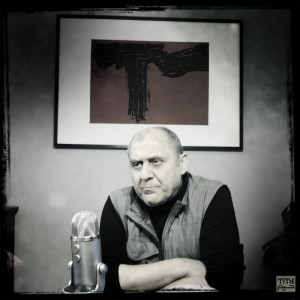
من برای کاری به دانمارک دعوت شده بودم و در آنجا با لوجینا باربرا آشنا شدم که ایتالیایی الاصل است و در تئاتر سبک خود را دارد. یکی از شاگردان او وحید عوض زاده نام دارد که از دوستان من است و در مراسم فارغ التحصیلی اش نمایشی را قرار بود روی صحنه ببرد که «هملت زار» نام داشت. همانطور که می دانید «زار» مراسمی است که برای بیماران روانی اجرا می شده تا به اصطلاح روح بد از وجود انسان خارج شود. از آنجا که هملت هم به نوعی بیمار روانی است، او در این نمایش دو موضوع را با هم آمیخته بود. این یک پروژه بزرگی بود که من هم دعوت داشتم تا در ۴ روز به همراه ۵ هنرپیشه و 2 نمایشنامه نویس کشف و اکتشاف بکنم. آنجا بود که لوجینا باربرا کار من را دید و از شیوه کار کردن من با بازیگرانم خوشش آمد و پیشنهاد همکاری داد و گفت که سبک کار من را به عنوان کارگردان دوست دارد.
به همین دلیل من به او پیشنهاد دادم که دراماتورژ ما در نمایش Forgiveness باشد، از آنجا که ما از ابتدا یک متن کامل نداشتیم و حین تمرین ها کار و متن شکل می گرفت و پیش می رفت، فکر کردم حضور یک دراماتورژ بسیار موثر است. بنا به دعوت ما، او به تورنتو آمد و در اولین ورک شاپ ما حضور یافت و وقتی دید من چقدر روی مسئله بدن و رقص تاکید می کنم، از من پرسید برای این نمایش در نظر داری با چند هنرپیشه کار کنی؟ گفتم 5 نفر. پیشنهاد داد که دو نفر این ۵ بازیگر رقصنده باشند. در ابتدا خیلی تعجب کردم و فکر کردم که ریسک بزرگی است، اما چون اهل ریسک کردن بودم، پذیرفتم. از او پرسیدم کسی را مدنظر دارد؟ جواب داد با توجه به شیوه ای که تو کار می کنی، دو هنرپیشه-رقصنده خوب سراغ دارم. باربرا فیلم اجراهای این دو رقصنده را برای من فرستاد و من با آنها تماس گرفتم. وقتی برای ورک شاپ بعدی به دانمارک رفته بودم، کار آنها را از نزدیک دیدم و متوجه شدم برای نمایش ما بسیار مناسب هستند و تصمیم گرفتم با آنها کار کنم. این دو نفر کمپانی خود را دارند و بسیار در دانمارک مشهورند و جوایز بسیاری را از آن خود کرده اند. ضمن اینکه حضور دو رقصنده دانمارکی فضا را بازتر کرد و به کار بعد بین المللی می داد. همچنین به تولید مشترک تبدیل شد و قرار است نمایش Forgiveness پس از تورنتو در دانمارک هم به روی صحنه برود.
شما مدت زیادی با پروژه Forgiveness درگیر بودید. در این مدت، نظر شما به مقوله بخشش تغییری کرد؟
در زمانی که با پروژه درگیر بودم گاهی پیش می آمد که از خودم می پرسیدم اگر من یک یهودی بودم، چه کار می کردم؟ یکی از صحنه های مورد علاقه من در این نمایش، درگیری در ایستگاه قطار است که مرد هنوز پس از این همه سال زندانی گذشته اش است و دارد زجر می کشد. چون معتقدم اگر نبخشیم، بیشترین آسیب را به خودمان می زنیم. بنابراین در طول نمایش گاهی به این موضوع فکر می کردم و یادم آمد افرادی بودند که وقتی من تازه به کانادا آمده بودم، رفتار خوبی با من نداشتند و من خیلی از این بابت ناراحت بودم. اما در طول نمایش فهمیدم که دیگر به آنها فکر نمی کنم و متوجه شدم که آنها را بخشیدم. به هرحال در مدت نمایش خیلی با مسئله بخشش درگیر بودم، اما هنوز به مرحله ای نرسیدم که بگویم من همه را به راحتی می توانم ببخشم. به هرحال منم انسانم و با خودم درگیرم و بخشش هم یک مسئله انسانی و بسیار سختی است.
پس بنابر تعریف و تجربه شخصی شما، «فراموشی» مرحله ای از «بخشش» است؟
شاید. وقتی شما دیگر به موضوعی که در گذشته شما را ناراحت کرده بود، فکر نمی کنید، یعنی آن را فراموش کردید و به نوعی بخشیدید. ما در این نمایش هم به موضوع «حافظه» اشاره می کنیم. معتقدم ما یک نفر از ۷ میلیارد جمعیت دنیا هستیم و قرار نیست بقیه جمعیت جهان ما را قضاوت کنند. بنابراین اگر اتفاقی افتاد و یا اشتباهی کردیم، نباید فکر و ذهن مان را درگیر آن بکنیم. هر روز موضوع جدیدی اتفاق می افتد و ما خیلی زود به فراموشی سپرده می شویم، بنابراین نباید خود را با فکر کردن به گذشته آزار دهیم.
با توجه به شیوه ای که کار می کنید، خود را در زمره کارگردان های آوانگارد می دانید یا کلاسیک؟ یا اصلا اعتقادی به این دسته بندی ها دارید؟
من از آوانگارد غرب خیلی آموختم. اما خیلی ها من را مینی مالیسم می دانند که آن را قبول می کنم. من در صحنه با حداقل ها کار می کنم و همانطور که دیدید در صحنه نمایش Forgiveness چند صندلی بیشتر وجود نداشت. اگر منظور شما از کلاسیک، قراردادی است، نه! من همیشه با قراردادها جنگیده ام. خودم را به عنوان کارگردانی نوآور می توانم تعریف کنم چون همیشه خودم و تماشاچی را به چالش کشیده ام. بنابراین همانطور که در ابتدا گفتم تحت تاثیر جنبش آوانگارد غرب بودم و از افرادی چون ساموئل بکت، اوژن یونسکو، پیتر بروک، آنتوان آرتور، ژاک ژنه و… تاثیر گرفتم اما تقلید نکردم. گاهی متفاوت کار کردم، خطر کردم و نوآوری کردم. اگر بخواهم صادقانه بگویم من جوایزم را گرفتم و الان در مرحله ای هستم که می خواهم کارهایم را به میان مردم ببرم و با آنها درمیان بگذارم. می خواهم خطر کنم، حتی اگر باعث شود زمین بخورم. من هیچ وقت از کارهایم رضایت کامل نداشتم و فکر می کنم خلق یک اثر کامل و بی نقص کار خداوند است نه من. اگرچه ممکن است نمایش هایی که روی صحنه بردم برای تماشاچی پروژه کاملی بوده، اما برای من این طور نبوده است و فکر می کنم زمانی که هنرمند به این نتیجه برسد که اثرش کامل است، به نقطه پایان رسیده است.
پنهان نمی کنم/ محمد یعقوبی اولین سفر سندباد…/ ساسان قهرمان جنون تجربه/ سیاوش شعبانپور
No borders or flags, just one human race\ Interview with Stavroula Logothettis Unexpressed emotions remain trapped inside us\ interview with Peter Farbridge From Micro Perspective to Macro Perspective\ iInterview with Jannik Elkær



